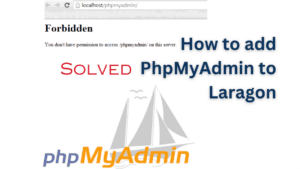To increase your audience and boost your SEO (Search Engine Optimization), you’ll need to implement a mix of technical strategies, content creation, and marketing campaigns. This is a step-by-step guide to help you improve your website’s SEO and draw in more visitors:
- Keyword Research
Look at the keywords your competitors are ranking for and use those as a jumping off point for other keywords, and use tools like SEMrush and Google Keyword Planner to find relevant keywords for your article. Pay attention to both primary keywords and long-tail keywords (more detailed terms). - Search Engine Optimization: Data should contain:
- Title Tags
- Meta Descriptions
- Header Tags (H1, H2, H3)
- Internal Linking page: adding your current content link to a related content page.
- Alt Text for Images: It is good for Google image search when you add alternative on image
you can use the plugins Yoast SEO , All in One SEO and Rank Math SEO to add meta data or coding functions to add meta data: https://www.v-norm.com/how-to-add-theme-support-for-the-title-tag/ and https://www.v-norm.com/how-to-make-image-appear-when-sharing-link-to-twitter-in-wordpress-without-using-plugin/
- Content Development and Planning
- Quality Content
- Length of content: Content that is 1,500–2,500 words long or longer is frequently ranked higher, but make sure it is comprehensive and devoid of unnecessary details.
- Regularity of publishing articles and other types of information on a regular basis. Consistent updates let search engines know that your website is active.
- Add video, embeds ifram post, and pictures to your website to boost visitors’ interest and lengthen their stay.
- Setting purpose to solve issues: how-to articles that respond to frequently asked queries or issues in your specialty. This establishes your website as a useful tool (Google Need website has quality content).
- Technical Search Engine Optimization
- Robots.txt File: Ensure your robots.txt file is configured properly to avoid accidentally blocking important pages from search engines.
- Canonical URLs: The Google search panel shows you how to prevent duplicate material by using canonical tags.
- XML Sitemap: Submit an XML sitemap to Google Search Console and Bing Webmaster Tools. This helps search engines crawl and index your site.
- Optimization
Use GTMetrix or Google PageSpeed Insights. Some useful methods are image compression, decreasing server response times, and adding lazy loading. - Backlink Building
Distribute your material on social networking platforms to promote engagement and shares, both of which help SEO. - Analytics and Continuous Monitoring
- Google Analytics: Use Google Analytics to monitor traffic, track popular pages, and audience demographics.
- Google Search Console: Regularly check Google Search Console for crawl errors, search queries, and indexing issues.
- Webmaster tool: track backlinks, input keyword search to get detail data for country, language, and device.
- Social Media Marketing
Share your content on popular social media platforms (Facebook, Twitter, LinkedIn, etc.) where the people who are most interested in you are active. To increase visibility, set relevant hashtags. the popular newsletters via email to build an email list and provide newsletters with deals, updates, and thought-provoking content frequently to maintain reader interest. - Collaborations for Your Content
Work together with blogs and podcasts: Obtain mentions , videos, webinars, and podcasts pertaining to your website.
You need to focus on both quality content and backlinks while consistently optimizing for user experience, which will improve your website’s search ranks and audience growth. Continue your strategy of performance data to stay on top of developing trends and improve your website SEO.
Category :
Tags :






